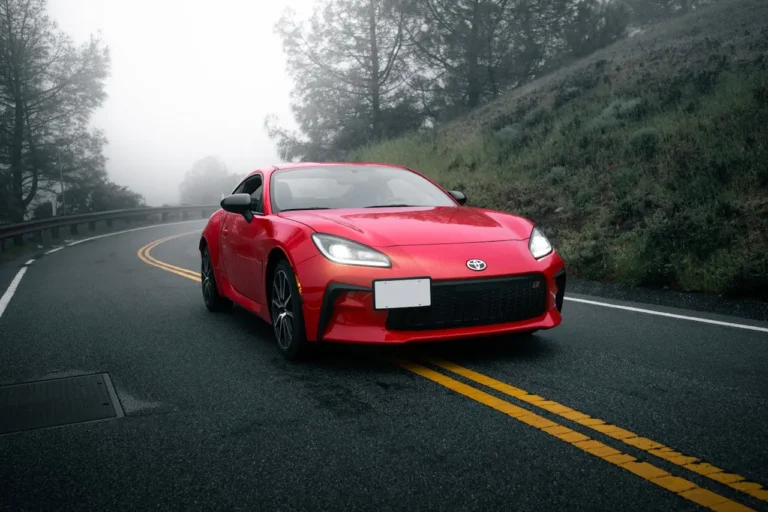
New Report Uncovers Extreme Auto Insurance Price Gaps Across U.S. Cities
CarInsurance.com, a leading online platform for auto insurance insights, education, and rate comparisons, has released an in-depth analysis of vehicle insurance premiums across the United States—and the findings spotlight just how dramatically your address can influence what you pay. The new report, titled “The Most Expensive Cities for Car Insurance in 2025 (and the Cheapest),” reveals that drivers living just a few miles apart can experience annual premium differences of thousands of dollars, even when their driving profiles are similar.
The analysis underscores a growing disparity tied to local risk conditions, economic trends, environmental factors, and state-level insurance laws. In many cases, these elements are proving to be just as influential—if not more—than personal factors such as driving history or claims records.
Huge Price Gaps From One City to the Next
One of the most eye-opening findings involves metro areas where drivers pay drastically different rates despite physical proximity. Brooklyn, New York, is a prime example. The report shows that drivers there pay an average of $3,012 more per year than motorists in nearby Jersey City, New Jersey—despite the two communities being separated by only a short drive or ferry ride.
These disparities are rooted in how insurers calculate localized risk. High population density, increased accident frequency, traffic congestion, and higher rates of theft or vandalism tend to push rates upward, even when the cities have similar economic or demographic characteristics.
Detroit and New Orleans Lead the High-Cost List
Detroit, Michigan, and New Orleans, Louisiana, once again rank at the top of the list for highest annual premiums. Both cities sit within states that consistently place among the most expensive for auto insurance due to a combination of structural and policy-driven factors.
In Michigan, the state’s history with no-fault insurance requirements—especially its long-standing unlimited personal injury protection (PIP) rule—has resulted in some of the steepest premiums in the nation. While reforms in recent years have aimed to create more price flexibility for consumers, legacy cost burdens and claims levels remain high in many urban centers, including Detroit.
Louisiana, home to New Orleans and Baton Rouge, faces its own set of challenges. The state has a long track record of high accident rates, costly bodily injury claims, and a litigious environment. Weather events such as hurricanes also contribute to higher claim volumes and damages. The result is a sustained upward pressure on premiums that has only intensified over the last decade.
These trends explain why drivers in both cities can spend thousands more per year than residents in rural or suburban areas located just an hour away.
Vermont Emerges as the Most Affordable State
At the other end of the spectrum is Vermont, which tops the list as the most affordable state for auto insurance in 2025. Several factors contribute to the state’s low premiums, including:
- Low traffic density: Fewer vehicles on the road translate to fewer accidents and claims.
- Minimal urban congestion: Vermont lacks major metropolitan centers, reducing the likelihood of high-cost multi-vehicle collisions.
- Low crime and vandalism rates: Insurers pay out significantly fewer theft-related or damage claims in Vermont communities.
- Tort insurance system: Unlike no-fault states, Vermont places financial liability on drivers found at fault. This system tends to keep payouts and premiums more predictable.
These conditions allow insurers to price coverage more competitively, making cities and towns in Vermont among the cheapest places in the nation for vehicle insurance.
The Growing Threat of “Insurance Deserts”
Beyond premiums, the report highlights an emerging challenge: the rise of “insurance deserts.” These are areas where insurers are increasingly hesitant to operate, often due to climate risks, high claim frequencies, or shifting economic conditions. The result is a reduced pool of available carriers, and when competition dries up, prices can surge even for drivers with clean records.
Many coastal and storm-prone regions—along with some densely populated urban areas—are witnessing insurers scaling back coverage or exiting entirely. This reduced availability pushes remaining carriers to raise rates or restrict access, leaving drivers with few affordable options.
ZIP Code: The New Premium Power Player
Laura Longero, executive editor at CarInsurance.com, emphasizes that a driver’s address has become one of the most powerful predictors of their annual premium. “Car insurance rates aren’t just about your driving history—your ZIP code plays a major role,” Longero explained. “Our research shows that location-based risk factors, such as crime rates, congestion, and even local laws, can have a bigger impact on premiums than many drivers realize.”
This means that two drivers with identical profiles—same age, driving history, credit score, and vehicle—can see wildly different quotes simply because they live on either side of a county or state line.
Top 25 Most and Least Expensive Cities
As part of the analysis, CarInsurance.com compiled a ranking of the top 25 most expensive cities and the 25 least expensive cities for auto insurance in 2025. While the full list is contained within the report, the broader trend shows that insurance costs are clustering heavily in certain states with distinctive regulatory and environmental landscapes.
High-cost cities are concentrated in:
- Michigan
- Louisiana
- Florida
- New York
- California
Meanwhile, the cheapest cities tend to be located in:
- Vermont
- Maine
- Idaho
- Iowa
- New Hampshire
States with large insurance markets and high urban density tend to occupy more slots on the expensive end of the spectrum, whereas states with smaller populations, fewer major cities, and lower crime levels dominate the affordability lists.
Cities with the Fastest Growing Premiums
The report also identifies the 10 cities that have experienced the largest increase in insurance costs over the past two years. While specific listings are provided in the full publication, the trendlines show that inflation, rising repair costs, more frequent natural disasters, and supply chain impacts on parts and labor have pushed premiums higher even in some areas that were historically affordable.
Compound inflation in vehicle repair and medical costs has made claims more expensive to pay out, which insurers have responded to by raising rates across the board. In some cities, the surge has been particularly sharp due to overlapping risk drivers such as crime spikes or weather-related events.
Understanding the Price Drivers
The regional variations revealed by the analysis can be traced back to several recurring influences:
- Population density and traffic volume
More vehicles on the road lead to more accidents, higher claim frequencies, and greater repair demand. - Crime and theft rates
Urban areas with elevated rates of auto theft, vandalism, and break-ins see significantly higher premiums. - Weather and climate risks
Hurricanes, hailstorms, flooding, wildfires, and other natural disasters contribute to claims for totaled vehicles, property damage, and comprehensive coverage losses. - State insurance laws
States with no-fault insurance tend to have higher premiums due to mandatory coverage requirements and complex claims handling processes. - Litigation and legal climate
States where personal injury lawsuits are frequent or settlements are substantial see insurers pricing in higher potential payouts. - Cost of repairs and medical care
Parts shortages, labor costs, and advanced vehicle technology have dramatically increased repair expenses. - Local economic conditions
Inflation, wage standards, and broader economic stress can translate into higher insurance costs over time.
Consumer Implications
For drivers, the findings carry important implications. People relocating for work or lifestyle reasons may face unexpected premium increases depending on their destination. Even a move from one suburb to another can lead to changed insurance quotes.
Additionally, the rise of telematics-based insurance—where premiums are partially determined by driving habits—may not fully offset location-based pricing in high-risk areas.
Consumers are encouraged to regularly compare rates, explore bundling options, and review coverage levels to ensure they are not overpaying based on outdated policies or limited carrier competition.
A Tool for Transparency and Planning
CarInsurance.com’s report arrives at a time when many households are feeling pressure from rising costs across essentials. The detailed breakdown of city-by-city variation offers consumers and policymakers a clearer understanding of the forces driving premiums and the opportunities to pursue reform or choice.
The full report also provides context on how municipalities and states are responding through regulatory changes, incentives for safer driving, and new technologies aimed at reducing collisions and theft.
Longero, who is available for interviews and media commentary, notes that education is a key step toward reducing the shock factor many drivers experience when shopping for coverage. “Once people understand what drives their costs, they can take steps to shop around, advocate for better local policy, or make informed decisions about where they live and drive,” she added.







